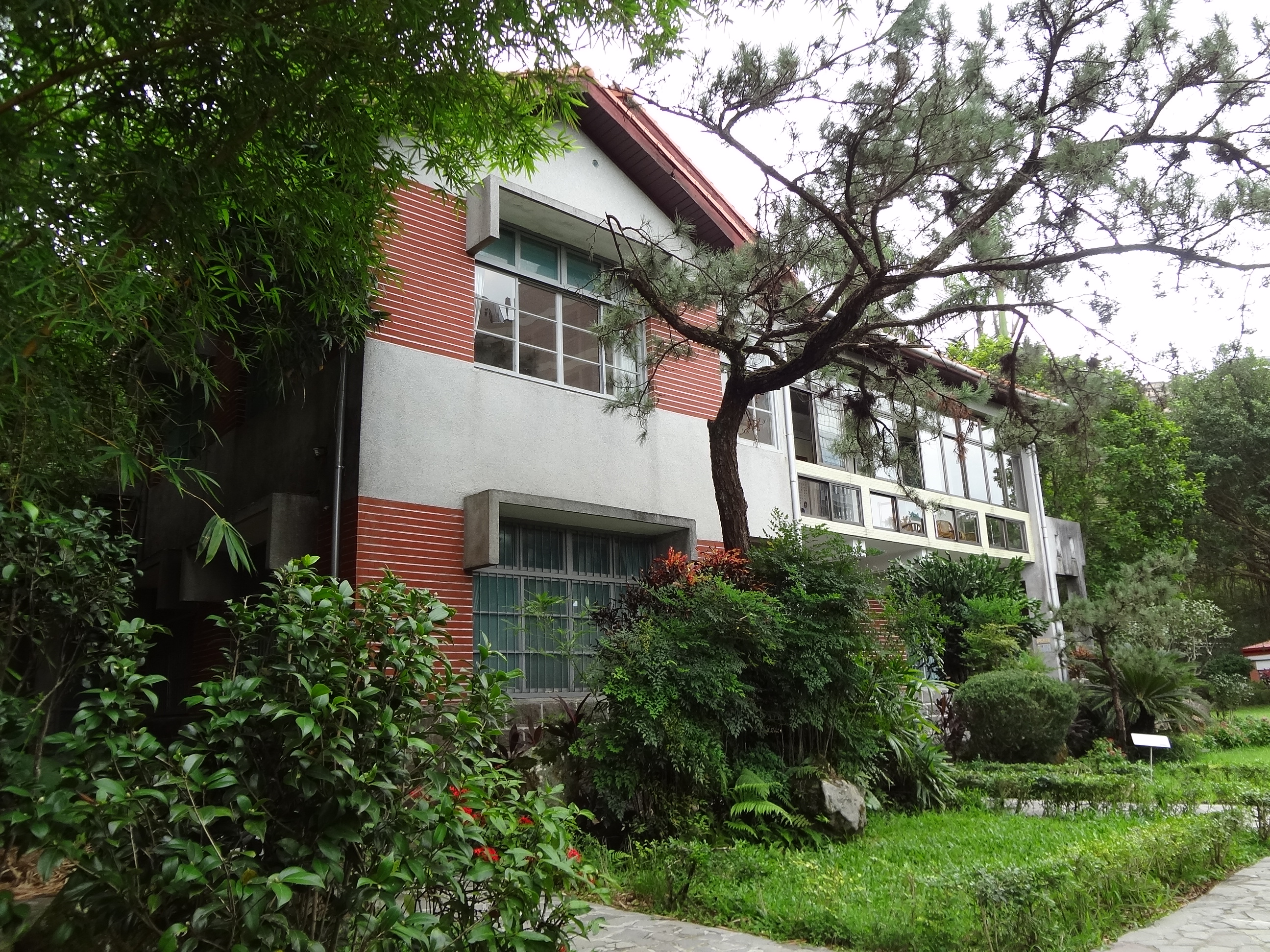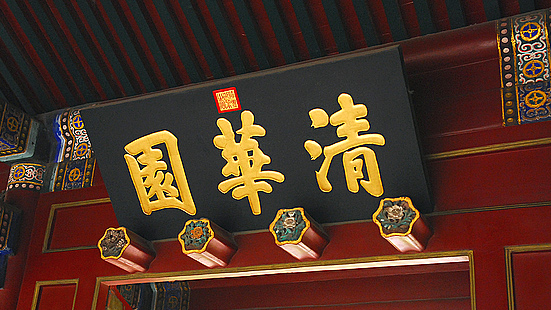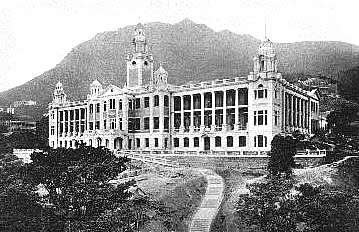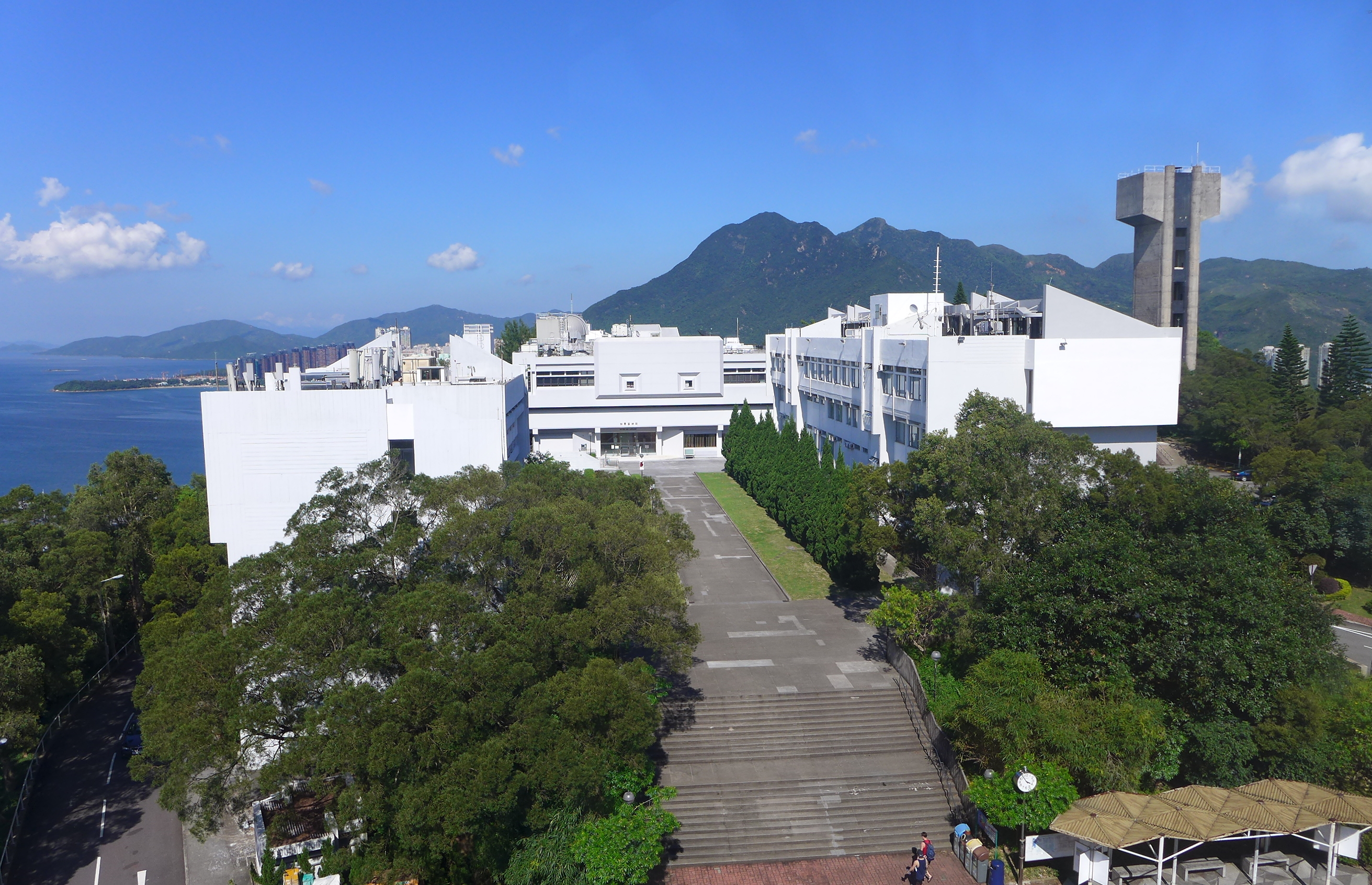|
Chien Mu
Ch'ien Mu or Qian Mu (; 30 July 1895 – 30 August 1990) was a Chinese historian, philosopher and writer. He is considered to be one of the greatest historians and philosophers of 20th-century China. Ch'ien, together with Lü Simian, Chen Yinke and Chen Yuan, was known as the "Four Greatest Historians" of Modern China (現代四大史學家). Life Early life: Jiangsu, Beijing Ch'ien Mu was from the prestigious Qian (Ch'ien) family in Wuxi. His ancestor was said to be Qian Liu (852–932), founder of the Wuyue Kingdom (907–978) during the Five Dynasties and Ten Kingdoms period. He was born in Qifang Qiao Village (七房橋; "Seven Mansions Bridge Village"), in Wuxi, Jiangsu Province. His biographer Jerry Dennerlien described his childhood world as the "small peasant cosmos" of rituals, festivals, and beliefs held the family system together. He received little formal education, but gained his knowledge on Chinese history and culture through traditional family school educatio ... [...More Info...] [...Related Items...] OR: [Wikipedia] [Google] [Baidu] |
Qian (surname)
Qian (; Shanghainese: ), also spelt Chin, Chien, Tsien, or Zee in Wu Chinese, is a common Chinese family name. The name literally means " money". Qian is listed at the second place in the Song Dynasty text '' Hundred Family Surnames'', in the line 趙錢孫李 ( Zhao, Qian, Sun, Li). As the royal surname of the kingdom of Wuyue, Qian was regarded as second only to Zhao, the imperial surname of the Song. As of 2008, Qian is the 96th most common surname in China, shared by 2.2 million people, with the province with the most people sharing the name being Jiangsu, an area formerly within the Wuyue kingdom. Origins According to the Song dynasty book, '' Tongzhi'', the Qian surname is descended from Zhuanxu, one of the legendary Five Emperors, via Pengzu, the founder of the Peng kingdom in modern-day Jiangsu during the Shang dynasty. A Zhou dynasty official, Fu, was a descendant of Pengzu and served in the royal Treasury, the ''Qianfu'' ("Money Office"). His descendants adopt ... [...More Info...] [...Related Items...] OR: [Wikipedia] [Google] [Baidu] |
Tsinghua University
Tsinghua University (; abbr. THU) is a national public research university in Beijing, China. The university is funded by the Ministry of Education. The university is a member of the C9 League, Double First Class University Plan, Project 985, and Project 211. Since its establishment in 1911, it has produced many notable leaders in science, engineering, politics, business, academia, and culture. As of 2022, Tsinghua University ranked 14th in the world by the 2023 QS World University Rankings and 16th globally by the 2022 ''Times Higher Education World University Rankings''. In 2021, Tsinghua ranked first in the Asia-Pacific region by '' THE Asia University Rankings'' and the ''U.S. News & World Report''. History Early 20th century (1911–1949) Tsinghua University was established in Beijing during a tumultuous period of national upheaval and conflicts with foreign powers which culminated in the Boxer Rebellion, an uprising against foreign influence in China ... [...More Info...] [...Related Items...] OR: [Wikipedia] [Google] [Baidu] |
University Of Malaya
The University of Malaya ( ms, Universiti Malaya, UM; abbreviated as UM or informally the Malayan University) is a public research university located in Kuala Lumpur, Malaysia. It is the oldest and highest ranking Malaysian institution of higher education according to two international ranking agencies, and also the only university in the post-independent Malaya. The university has graduated six prime ministers of Malaysia, and other political, business, and cultural figures of national prominence. The predecessor of the university, King Edward VII College of Medicine, was established on 28 September 1905 in Singapore, then a territory of the British Empire. In October 1949, the merger of the King Edward VII College of Medicine and Raffles College created the university. Rapid growth during its first decade caused the university to organize as two autonomous divisions on 15 January 1959, one located in Singapore and the other in Kuala Lumpur. In 1960, the government of Malaysia ... [...More Info...] [...Related Items...] OR: [Wikipedia] [Google] [Baidu] |
University Of Hong Kong
The University of Hong Kong (HKU) (Chinese: 香港大學) is a public university, public research university in Hong Kong. Founded in 1887 as the Hong Kong College of Medicine for Chinese, it is the oldest Higher education in Hong Kong, tertiary institution in Hong Kong. HKU was also the first university established by the British in East Asia. As of December 2022, HKU ranks 21st internationally and third in Asia by ''QS World University Rankings, QS'', and 31st internationally and fourth in Asia by ''Times Higher Education''. It has been ranked as the most international university in the world as well as one of the most prestigious universities in Asia. Today, HKU has ten academic faculties with English as the main language of instruction. The University of Hong Kong was also the first team in the world to successfully isolate the coronavirus Severe acute respiratory syndrome coronavirus, SARS-CoV, the causative agent of SARS. History Founding The origins of The Universit ... [...More Info...] [...Related Items...] OR: [Wikipedia] [Google] [Baidu] |
Yale University
Yale University is a Private university, private research university in New Haven, Connecticut. Established in 1701 as the Collegiate School, it is the List of Colonial Colleges, third-oldest institution of higher education in the United States and among the most prestigious in the world. It is a member of the Ivy League. Chartered by the Connecticut Colony, the Collegiate School was established in 1701 by clergy to educate Congregationalism in the United States, Congregational ministers before moving to New Haven in 1716. Originally restricted to theology and sacred languages, the curriculum began to incorporate humanities and sciences by the time of the American Revolution. In the 19th century, the college expanded into graduate and professional instruction, awarding the first Doctor of Philosophy, PhD in the United States in 1861 and organizing as a university in 1887. Yale's faculty and student populations grew after 1890 with rapid expansion of the physical campus and sc ... [...More Info...] [...Related Items...] OR: [Wikipedia] [Google] [Baidu] |
New Asia Middle School
New Asia Middle School (), abbreviated as NAMS, is an aided secondary school founded in 1973. It is located at Farm Road, Kau Pui Lung, Kowloon, Hong Kong. The school was founded by Prof. Ch'ien Mu as a non-profit-making Chinese secondary school at the former campus of New Asia College, after the latter became a member college of the Chinese University of Hong Kong and moved to Ma Liu Shui, Sha Tin. The spirit of the school is to promote Chinese culture, revive Chinese ethics, and cultivate the ''New Asian qualities'' of students. Recently, the school uses Chinese as the main medium of instruction, offering four classes each from Form 1 to Form 6. In the 1970s, the members of the school board included Prof. Tang Chun-i and Prof. Yu Ying-shih etc. The school receives positive evaluation of students' polite behaviour from shop owners as well as the staff working in the vicinity. School administration The founder of the school was Prof. Ch'ien Mu. After their retirement from c ... [...More Info...] [...Related Items...] OR: [Wikipedia] [Google] [Baidu] |
Sha Tin
Sha Tin, also spelt Shatin, is a neighbourhood along Shing Mun River in the eastern New Territories, Hong Kong. Administratively, it is part of the Sha Tin District. Sha Tin is one of the neighbourhoods of the Sha Tin New Town project. The new town was founded in 1973 under the New Towns Development Programme of the Hong Kong government. Its current name was named after the nearby village of Sha Tin Wai. The literal English translation is 'Sand Fields'. History Tai Wai Village, located in Tai Wai, next to Sha Tin, and the oldest and largest walled village in Sha Tin District, was built in 1574, during the Ming Dynasty. Before British rule in Hong Kong, the area of Sha Tin and its vicinity was referred to as Lek Yuen (lit. "source of trickling" or "source of clear water"). Colonial officials allegedly mistook the name of the Sha Tin Wai village as the name of the area and it has been used ever since. Nowadays, the original name is used to refer to Lek Yuen Estate. ... [...More Info...] [...Related Items...] OR: [Wikipedia] [Google] [Baidu] |
Ma Liu Shui
Ma Liu Shui is an area in Sha Tin District, in the New Territories, Hong Kong. The area faces Tide Cove (Sha Tin Hoi) and Tolo Harbour. The Chinese University of Hong Kong and the Hong Kong Science Park are located in Ma Liu Shui. Name etymology Ma Liu Shui is directly and phonetically translated to English from "馬料水" in Cantonese. It literally means "the water that the horses feed on". It was originally named "馬嫽水", with the same phonetic translation, literally meaning "the water that the horses play in". According to legend of Hakkas, hundreds of years ago when the government of Bao'an County was riding his horse around towns to announce the collection of rice and crops, the horse stopped in the area and went down the hills to drink and play in the lake. It would not leave and looked as if it were at home. The Hakka villagers observed this strange phenomena and cleverly suggested that the horse may have originated from there, therefore the sense of b ... [...More Info...] [...Related Items...] OR: [Wikipedia] [Google] [Baidu] |
Chinese University Of Hong Kong
The Chinese University of Hong Kong (CUHK) is a public research university in Ma Liu Shui, Hong Kong, formally established in 1963 by a charter granted by the Legislative Council of Hong Kong. It is the territory's second-oldest university and was founded as a federation of three existing colleges – Chung Chi College, New Asia College and United College – the oldest of which was founded in 1949. CUHK is organized into nine constituent colleges and eight academic faculties, and remains the only collegiate university in the territory. The university operates in both English and Chinese, although classes in most colleges are taught in English. Four Nobel laureates are associated with the university, and it is the only tertiary institution in Hong Kong with recipients of the Nobel Prize, Turing Award, Fields Medal and Veblen Prize sitting as faculty in residence. History Origins The university was formed in 1963 as a federation of three existing colleges. The first o ... [...More Info...] [...Related Items...] OR: [Wikipedia] [Google] [Baidu] |
New Asia College
New Asia College is a constituent college of the Chinese University of Hong Kong located in Sha Tin, New Territories, Hong Kong. History New Asia College was founded in 1949 by Chinese scholars Ch'ien Mu (Qian Mu), Tang Junyi (Tang Chun-i), and Zhang Pijie (Tchang Pi-kai), in Hong Kong, then a British dependency, after the Communist victory in mainland China. In 1963, the College joined forces with United College and Chung Chi College to form the Chinese University of Hong Kong under a charter granted by the Legislative Council of Hong Kong. The College has since then become a research and educational hub for Confucian philosophy and Chinese studies. Presidents and Heads Presidents & Heads of New Asia College: Presidents (1949-1977) :1. Prof. Ch'ien Mu (1949-1965) :2. Prof. Ou Tsuin-chen (吳俊升) (1965-1969) :3. Prof. Y.T. Shen (1969-1970) :4. Prof. Y.P. Mei (1970-1973) :5. Prof. Yu Ying-shih (1973-1975) :6. Prof. Chuan Han-sheng (1975-1977) College Heads ( ... [...More Info...] [...Related Items...] OR: [Wikipedia] [Google] [Baidu] |
Tang Chun-i
Tang Chun-I or Tang Junyi (, 17 January 1909 – 2 February 1978) was a Chinese philosopher, who was one of the leading exponents of New Confucianism. He was influenced by Plato and Hegel, as well as by earlier Confucian thought. Biography Tang, the son of a wealthy scholar, was the first born of six children in Sichuan, China. Tang was briefly a student of Liang Shuming before transferring to National Central University. In 1927, Tang became a follower of Xiong Shili after attending a series of lectures. He graduated from National Central University in 1933, soon after becoming a lecturer there. In 1940, Tang met his colleague and lifelong friend Mou Zongsan. In 1943 he married Tse Ting Kwong, an educational psychology graduate. 1944 he joined the National Central University Philosophy Department as a full-time professor, and later he even became head of the department. Only five years later, in 1949, Tang left Mainland China to live in Hong Kong, as part of an exodus of Ch ... [...More Info...] [...Related Items...] OR: [Wikipedia] [Google] [Baidu] |
Yale-China Association
The Yale-China Association (), formerly Yale-in-China, is an independent, nonprofit organization which seeks to develop educational programs in and about China and further understanding between Chinese and American people. Founded in 1901 and originally a Protestant missionary society, Yale-China's work is characterized by long-term relationships to build Chinese institutional capacity. Current programs include the fields of public health and nursing, legal education, English language instruction, American Studies, and cultural exchange for Chinese and American students. Publications include a regular newsletter, biennial report, and the annual Yale-China Health Journal. Establishment The Yale-China Association was first incorporated as the Yale Foreign Missionary Society, and was known informally as Yale-in-China as early as 1913. It was nondenominational from its beginnings and by the 1920s had ceased to be an overtly missionary enterprise. It was re-incorporated in 1934 as ... [...More Info...] [...Related Items...] OR: [Wikipedia] [Google] [Baidu] |










